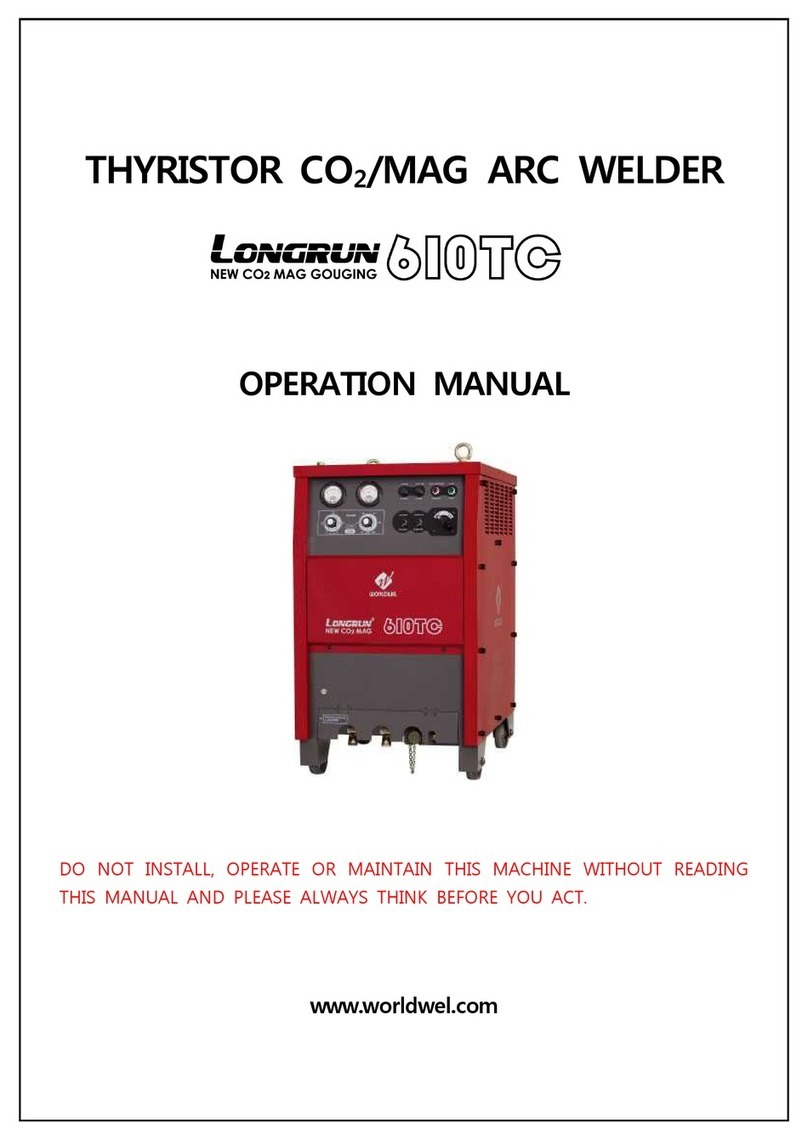
Welding sparks can cause fire or explosion.
Remove fire hazards from the welding area. If this is not possible, cover them to prevent the■
welding sparks from starting a fire. Remember that welding sparks and hot materials from welding
can easily go through small cracks and opening to adjacent areas. Avoid welding near hydraulic
lines.
When not welding, make certain no part of the electrode circuit is touching the work or ground.■
Accidental contact can cause overheating and create a fire hazard.
Do not weld on drums, tanks, or any closed containers unless a qualified person has tested it and■
declared it or prepared it to be safe.
Connect the work cable to the work as close to the welding area as practical. Work cables■
connected to the building framework or other locations away from the welding area increase the
possibility of the welding current passing through lifting chains, crane cables or other alternate
circuits. This can create fire hazards or overheat lifting chains or cables until they fail.
INSTALLATION■
The welding machine shall be installed at a place ;●
free from the inflammables․
less humidity, dirt and dust․
protecting from influence of direct sunlight, wind and rain․
not generated oil vapor and corrosive gas․
operating temperature range is from -10 to 40℃ ℃․
least 30 away from wall and other welding machine㎝․
Input Connection (Rear of the machine)●
Be sure the voltage, phase and frequency of the input power is as specified on the name plate
located on the rear panel of the machine.
To connect the power cables, turn the power switch OFF․
Verify the voltage to be supplied from main power.․
Plug in a input power cord into a 220V outlet that is grounded.․
Open the cover of terminal and connect the power cable to the power input․
terminal on the rear of the machine and close the cover of terminal. For
grounding the machine, connect a ground wire to the ground terminal marked
with the symbol is located on the rear panel of the machine.
Connect the gas hose to the gas input terminal.․






























